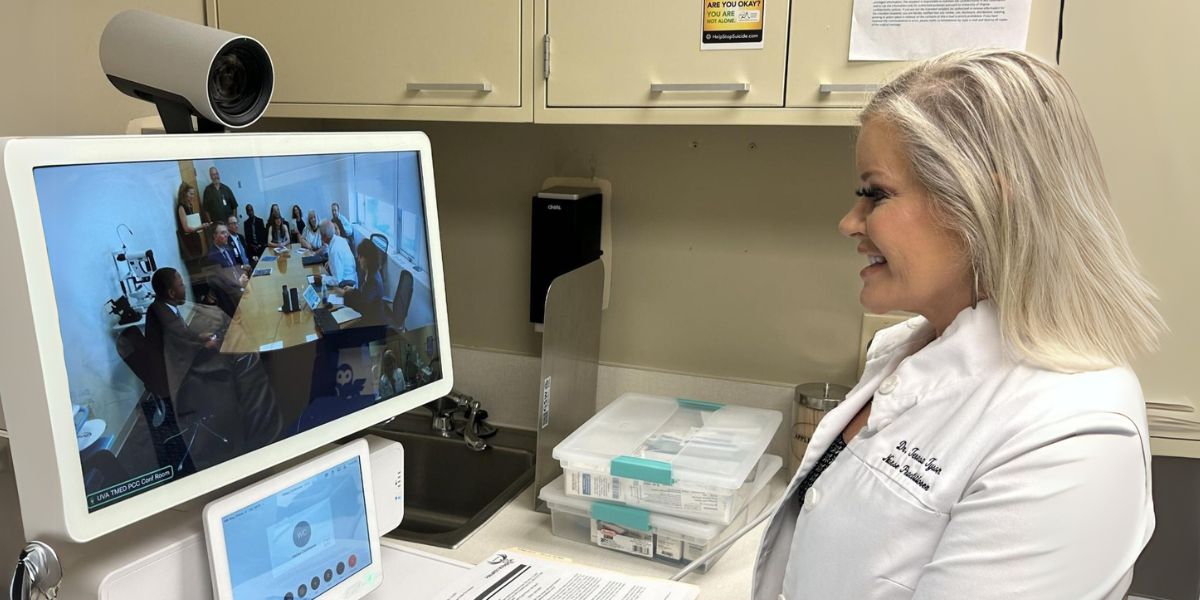Colleen Barker: An Expert in Medical Information & Pharmacy Informatics
Medical knowledge and pharmacy informatics are essential components of modern healthcare, helping to ensure that accurate, reliable data supports clinical decision-making and patient care. The integration of informatics in pharmacy has the potential to streamline medication management, reduce errors, and improve treatment efficiency. As technology continues to progress, healthcare organizations are increasingly relying on these systems to optimize workflows and improve safety measures.
As demonstrated by Colleen Barker, professionals in this field must possess a blend of clinical knowledge and technical expertise, allowing them to bridge the gap between healthcare and digital innovation. With advancements such as artificial intelligence, telepharmacy, and predictive analytics, the landscape of pharmacy informatics is evolving rapidly, creating new opportunities. As regulatory requirements and data security concerns continue to shape industry standards, staying updated on new developments is important for those working in this dynamic field.
Medical Information & Pharmacy Informatics
Medical information involves collecting, evaluating, and disseminating drug-related data to support healthcare decisions. It ensures that professionals and patients have access to accurate and up-to-date knowledge about medications, treatment guidelines, and potential drug interactions. Pharmacy informatics, on the other hand, integrates technology into medication management to streamline processes, reduce errors, and enhance patient safety. These two fields overlap in many ways, particularly in optimizing electronic health records and clinical decision support systems.
Core Responsibilities & Industry Applications
Experts play a key role in ensuring the accuracy and accessibility of drug-related data. They assess and verify medication details, offering guidance to healthcare professionals on proper usage, dosage adjustments, and potential adverse effects. Their expertise helps reduce medication errors and supports clinical decision-making, contributing to improved patient outcomes.
These professionals also contribute to the development and optimization of informatics systems used in hospitals and pharmaceutical companies. A well-designed system can alert physicians to drug interactions or recommend alternative treatments based on a patient’s history. Regulatory compliance is another key aspect, requiring specialists to stay updated on changing policies to ensure healthcare institutions meet industry standards.
The application of pharmacy informatics extends to research and development, where data-driven insights can help pharmaceutical companies refine drug formulations and monitor post-market safety. With the healthcare industry becoming more digital, the demand for professionals who can bridge the gap between clinical expertise and technology is expected to grow.
Essential Skills & Educational Pathways
A strong foundation in pharmacy, healthcare technology, and data management is essential for those looking to specialize in this field. Many professionals start with a degree in pharmacy, followed by additional training in informatics, which equips them with the knowledge to navigate electronic health records, clinical databases, and automated medication systems. Familiarity with programming languages or data analytics can be beneficial when working with complex healthcare software.
Beyond technical expertise, critical thinking and problem-solving skills are equally important. A pharmacy informatics specialist may need to troubleshoot system malfunctions, interpret vast amounts of clinical data, or develop strategies to enhance workflow efficiency. Attention to detail is vital, as even minor errors in medication records or automated dispensing systems can have significant consequences.
Communication skills also play a major role, as these professionals often collaborate with physicians, nurses, IT teams, and regulatory agencies. The ability to translate complex medical and technological concepts into clear, actionable insights helps healthcare teams make informed decisions with confidence. Effective communication also enhances interdisciplinary teamwork, leading to more efficient implementation of informatics solutions across healthcare settings.
Impact on Patient Safety & Healthcare Efficiency
Accurate medical information is critical in preventing medication errors, which may have serious consequences for patient health. Pharmacy informatics helps minimize these risks by integrating decision-support tools that alert healthcare providers to potential drug interactions, allergies, or contraindications. By ensuring that the right medication reaches the right patient at the right time, these systems contribute to safer and more effective treatment outcomes.
Automated dispensing systems, electronic prescribing, and real-time data access reduce administrative burdens, allowing healthcare professionals to focus more on direct patient care. Hospitals and pharmacies that leverage these technologies often see improved coordination between departments, leading to faster response times and better resource management. The ability to track medication inventory in real time and predict supply needs can help prevent shortages and ensure continuous, uninterrupted patient care.
Emerging Trends & Future Developments
The field of pharmacy informatics is rapidly evolving, with artificial intelligence and machine learning playing an increasingly significant role. These technologies are being used to analyze vast amounts of clinical data, helping predict patient responses to medications and identifying potential risks before they become critical. The integration of predictive analytics into healthcare decision-making is transforming how treatments are tailored to individual patients.
Another major shift is the growing reliance on telepharmacy and remote medication management. Digital platforms now enable pharmacists to provide consultations, monitor prescriptions, and support healthcare teams from a distance. As telehealth continues to expand, the need for secure and efficient informatics solutions is expected to increase, ensuring that patients receive high-quality care regardless of location.
Regulatory changes and data privacy concerns also play a role in shaping the future of this field. With the growing emphasis on interoperability and secure data sharing, professionals must stay ahead of compliance requirements to maintain trust and efficiency in healthcare systems. The development of blockchain technology in medical records is another innovation that could enhance security, ensuring patient data remains protected while being easily accessible to authorized healthcare providers.
Published by Stephanie M.





